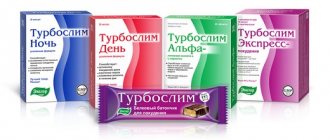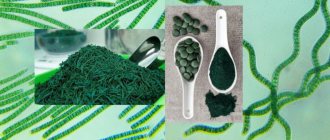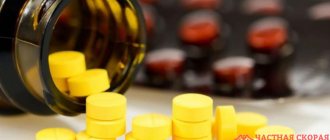Furosemide and Asparkam are a common combination used to cleanse the body and remove water.
Furosemide and Asparkam are a common combination used to cleanse the body and remove water.
Description of drugs
Both drugs belong to different pharmacological groups, but are prescribed in combination, because without Asparkam the action of Furosemide is harmful to the body.
Furosemide
The drug is available in dosage form in the form of tablets and belongs to the diuretics. The main active ingredient is furosemide, which is a diuretic.
Asparkam
It is a medicine belonging to the pharmacological group of microelements in combinations. Used for disorders of the heart muscle, treatment of vascular diseases, and hematopoietic disorders. It replenishes the deficiency of certain elements and normalizes intracellular metabolic processes. It is prescribed to patients for complex therapy.
Asparkam is used for disorders of the heart muscle, treatment of vascular diseases, and hematopoietic disorders.
Review of Asparkam and Furosemide
Asparkam is a medicinal drug that supplies minerals to the body.
Potassium imbalance can disrupt metabolic processes in the body and provoke deviations in vital biochemical processes. Potassium is part of all organs in the human body; without it, the synthesis of proteins, as well as glycogen and acetylcholine molecules, is impossible. Potassium ions accelerate the work of nerve fibers at the intracellular level, which allows for rapid transmission of impulses and accumulation of energy elements in the fibers. Magnesium ions enhance the effects of potassium, so the simultaneous replenishment of both elements has a positive effect on the functioning of the body.
Pharmacological action of Asparkam
Potassium deficiency, as well as magnesium deficiency, provokes the development of such pathologies:
- hypertension;
- atherosclerosis of the coronary arteries;
- cardiac ischemia;
- heart rate disturbance.
Furosemide is a diuretic potassium-sparing medication. Available in the form of a powder for the preparation of a suspension, as well as in the form of a solution for parenteral administration and in tablet form.
The active ingredient in the medicine is furosemide. It is prescribed to relieve severe swelling in many metabolic disorders, and is also a mandatory remedy as part of the complex therapy of diseases of the urinary system, liver pathologies and cardiac disorders.
How to drink Furosemide with Asparkam correctly
The dosage and regimen are prescribed by the doctor individually for each patient.
For heart diseases
For prevention, take 1 tablet of the drug in the mornings and evenings.
The course is determined individually, on average – 3 weeks twice a year.
For swelling
Diuretic - 1 tablet three times, Asparkam - 2 tablets three times a day. Drink after meals.
For edema, Furosemide is taken 1 tablet three times.
For weight loss
In the morning, 1 tablet. If the effect is weak, you can take 1 tablet in the morning and evening, but no more than 4 tablets per day.
The principle of action of the drugs
Furosemide is a fast-acting diuretic drug that becomes an emergency treatment for severe life-threatening pathologies - cerebral and pulmonary edema. The mechanism of action of this medication is due to blocking the reabsorption of chlorine and sodium in kidney cells.
The diuretic effect occurs quickly after taking the medicine, but lasts a short period. The time of the diuretic effect directly depends on the dosage taken; after a single use, this effect lasts up to 4 hours.
Mechanism of action of furosemide
The mechanism of action of Asparkam is associated with the action of the aspartate component. This component is involved in the transport of potassium and magnesium ions throughout the body to participate in metabolism. Magnesium takes part in more than 300 metabolic processes in the body.
The main purpose of potassium is to influence cardiomyocytes and prevent the development of arrhythmia. Magnesium helps potassium penetrate the cell membrane of cardiomyocytes, which helps restore myocardial functionality.
Furosemide is quickly absorbed in the digestive tract, bioavailability is 50-70%. The maximum concentration in the blood is 1-2 hours. 90% binds to plasma proteins albumin. The drug penetrates the placental barrier and affects the fetus; the drug has also been detected in breast milk. The pharmacokinetics of Asparkam have not been studied in clinical studies.
Doctors' opinions on the compatibility of Furosemide and Asparkam
Evgeny Olegovich, therapist, Magnitogorsk
Furosemide is considered one of the most effective drugs used to get rid of excess fluid in the body. To avoid side effects, it is necessary to take additional substances that will prevent the leaching of metals and trace elements. Asparkam is most often taken in combination with diuretics.
Olga Aleksandrovna, phlebologist, Saransk
When the vascular system is malfunctioning, swelling often occurs. Proper use of diuretics helps remove water, and a complex of microelements reduces the risk of developing unwanted reactions.
Main differences, effectiveness and safety
The main difference between both drugs is the different pharmacological group. Furosemide is a loop diuretic, and Asparkam is a source of potassium and magnesium. The mechanism of action of both medications is completely different, as is the composition.
Both medications effectively complement each other when used together. Furosemide removes potassium from the body, and Asparkam restores its concentration.
Since both drugs under consideration are not in the same pharmacological group and have completely different purposes, it would be incorrect to compare them in effectiveness. Furosemide in its group is one of the fastest-acting diuretics, which allows it to be used in resuscitation of cerebral and pulmonary edema. Asparkam is a drug that is the most effective and popular in its medicinal group.
If the correct dosage and dosage regimen are followed, drugs rarely cause negative effects. Side effects often occur during self-medication. Possible negative reactions of the body are presented in the table.
| Organs | Negative effects | |
| blood flow system and myocardium | Furosemide | Asparkam |
|
| |
| CNS |
|
|
| Digestive tract |
|
|
| Metabolism |
|
|
| Allergy |
|
|
Contraindications
It is important to know what furosemide is used for, and to understand what contraindications exist. This will avoid dangerous consequences when using it. It is advisable to consult a doctor before starting to use furosemide; the instructions for use of the tablets emphasize many conditions where caution is necessary. In particular, these are:
- Anuria. With its development, pathological changes in the organs of the urinary system lead to the fact that urine does not enter the bladder.
- Oliguria. This pathology is characterized by a decrease in daily urine production for various reasons.
- Glomerulonephritis. This serious kidney disease is associated with damage to the glomeruli, often due to infection.
- Hyperuricemia. This pathology is characterized by an increased concentration of uric acid in the blood.
You should stop using the drug if you are hypersensitive to the active substance. The drug is not prescribed in the first trimester of pregnancy, since the active substance crosses the placenta. The drug should also be discontinued during lactation, as it suppresses the production of breast milk.
There are also a large number of relative contraindications. In particular, these are diabetes mellitus, low blood pressure, pancreatitis, diarrhea, etc. There are other contraindications that are indicated in the instructions for use.
Contraindications and side effects
According to the instructions, Asparkam should not be taken for:
- hyperkalemia, hypermagnesemia (increased levels of potassium or magnesium in the blood);
- hypocortisolism (Addison's disease);
- stomach or duodenal ulcer;
- cholecystitis;
- cardiovascular pathologies associated with heart rhythm disturbances;
- acute or chronic renal failure;
- hypersensitivity to the main or auxiliary components of the drug.
This drug produces side effects mainly when the dosage is exceeded. These include: thirst, dry mouth, rapid heartbeat, muscle weakness, decreased blood pressure, less often - drowsiness, numbness of the extremities, breathing problems, convulsions. If such symptoms occur, the drug should be stopped or its dosage reduced.
Rating of food delivery for weight loss
Delivery of food with calculated calorie content, ready-made diets. No more cooking and counting calories!
Go
Go
Analogs
Analogues of these medications are medications that are similar in their composition or therapeutic effects. Analogues of Furosemide can be considered:
- Torsemide is a modern diuretic that is more effective than the original and is used to treat heart failure, as well as pathologies associated with renal failure and disorders of the urinary system.
- Diuver is an effective medication that reduces swelling in heart pathologies. Not prescribed for swelling in the peritoneum due to cirrhosis of the liver.
Analogues of Asparkam:
- Panangin is a drug prescribed for heart pathologies, as well as during the period of taking cardiac glycosides. Effectively replenishes potassium deficiency during hypokalemia.
- Rhythmocor - a drug prescribed for cardiac ischemia, cardiopathy, impaired rhythm and conductivity of the myocardium, and vegetative-vascular dystonia.
Indications
Furosemide, the instructions focus on this, is prescribed primarily to relieve edema that occurs against the background of the following pathologies:
- Heart and kidney failure.
- Nephrotic syndrome.
- Liver pathologies.
- Arterial hypertension.
- Hypertensive crisis.
Furosemide is also indicated for burns; the instructions for use indicate this. The medicine is prescribed if severe toxicosis occurs in the second and third trimester of pregnancy. It is very often accompanied by swelling and other severe symptoms.
MEDICINES FOR REDUCING BLOOD PRESSURE
Preferanskaya Nina Germanovna
Associate Professor, Department of Pharmacology, Faculty of Pharmacy, First Moscow State Medical University named after. THEM. Sechenova, Ph.D.
Edema syndrome is characterized by excessive water retention in the body, which is manifested by the accumulation of fluids in tissues and serous cavities (pleural and abdominal cavities). Renal and extrarenal factors play a role in the development of edema.
Edema is observed in various diseases: circulatory failure, nephrosis (damage to the kidney tubules as a result of prolonged purulent processes and toxic effects), diseases of the cardiovascular system, liver (for example, cirrhosis), accompanied by stagnation in the portal vein system. Diuretics are used as adjuncts for the treatment of arterial hypertension, heart failure, liver and kidney diseases, endocrine diseases, for the prevention and treatment of cerebral and pulmonary edema, and traumatic brain injuries.
The following diuretics are most often used as antihypertensives:
- Thiazide diuretics: Hydrochlorothiazide (Hypothiazide);
- Thiazide-like diuretics: Indapamide (Acripamide, Arifon, Indap); Chlorthalidone (Oxodoline);
- “Loop” diuretics: Furosemide (Lasix);
- Potassium-sparing diuretics, aldosterone antagonists: Spironolactone (Aldactone, Veroshpiron).
Thiazide and thiazide-like diuretics
reduce the reabsorption of sodium and chloride ions in the initial part of the distal tubule in equivalent quantities.
The reabsorption of potassium, magnesium and bicarbonate ions is less inhibited, and the excretion of calcium ions is delayed. The drugs have a moderate diuretic effect, increasing sodium excretion by ~5–10%, but differ in the duration of the effect. Hydrochlorothiazide is well absorbed from the gastrointestinal tract and excreted unchanged by the kidneys. After a single oral dose, the effect of the drug begins at the end of the first hour, reaches a maximum after 3-4 hours and lasts 10-12 hours. It has some hypotensive effects and is used in the treatment of hypertension. The most widely used combination drugs for arterial hypertension are: Adelphan-esidrex, Inderid, Capozide, Triampur, Trireside-K, Triamtel, Khizaar
, etc. Thiazide-like diuretics cause potassium loss, which adversely affects the function of the heart and liver. Therefore, treatment is recommended to be carried out against the background of a diet rich in potassium salts (bananas, dried apricots, carrots, beets, potatoes, peas), and, if necessary, prescribe potassium supplements. When taken, the excretion of uric acid from the body decreases, which is accompanied by exacerbations of gout, and can also cause an exacerbation of diabetes mellitus, because. leads to hyperglycemia with long-term use. In rare cases, weakness, allergic reactions, nausea, vomiting, and diarrhea may occur.
IMPORTANT!
Contraindications: severe renal failure, severe forms of diabetes mellitus, gout and liver damage.
Indapamide
inhibits the reabsorption of sodium, chlorine, potassium and magnesium ions in the cortical segment of the nephron loop, equally effectively increasing urine excretion, like hydrochlorothiazide.
After a single oral dose, the diuretic effect begins within 30 minutes. and lasts 24 hours. The drug does not affect the content of glucose, total cholesterol and HDL. Reduces hypercalciuria, due to the blockade of calcium channels, the concentration of calcium in the blood serum decreases and reduces the risk of re-formation of calcium stones in the kidneys. When used, side effects occur: orthostatic hypotension, anxiety, headache, nausea, blurred vision. The concentration of uric acid in the serum increases, and polyuria sometimes occurs. A combination antihypertensive drug with perindopril Noliprel
.
Furosemide
is one of the most active fast-acting diuretics, mainly acting in the thick part of the loop of Henley. When taking these drugs, the reabsorption of many Na+, K+, Cl+, Ca2+ and Mg2+ ions is disrupted and uric acid is retained. Water in this part of the nephron is not reabsorbed, and these ions, along with water, are excreted from the body. These are the most effective and powerful diuretics.
IMPORTANT!
“Loop” diuretics cause the same undesirable effects as hydrochlorothiazide: hypokalemia, hypomagnesemia, hyperuricemia, hyperglycemia, weakness, allergic reactions, dizziness, nausea, vomiting, diarrhea, etc.
It is well absorbed when taken orally and binds loosely to proteins in the blood. It is quickly eliminated from the body by the kidneys. After oral administration, the effect begins within 30 minutes. and continues for 5–6 hours. The drug acts most quickly when administered intravenously: after 3–4 minutes. An increase in diuresis begins, which lasts 3–4 hours.
Two hormones have a great influence on kidney function: aldosterone, a hormone of the adrenal cortex, and vasopressin, an antidiuretic hormone of the pituitary gland. Aldosterone
enhances the reabsorption of sodium in the distal tubules. With edema, the secretion of aldosterone is increased, which leads to the accumulation of sodium ions in the body. Excess sodium reflexively enhances the secretion of antidiuretic hormone. The latter disrupts the reabsorption of water in the renal tubules, which helps equalize the concentration of sodium ions to a physiological level. The primary cause of edema is sodium retention in the body, water retention is secondary.
Spironolactone
- an aldosterone antagonist, competes with this hormone for binding to aldosterone receptors in the distal tubules of the nephron. As a result, reabsorption is impaired and the excretion of sodium, chlorine and water ions increases. At the same time, the secretion of potassium and magnesium in the urine decreases and they are retained in the body. The diuretic effect is weak or moderate, the effect develops slowly, the onset of action is 1–2 days after the start of administration, the maximum effect is after 2–3 days. Adding 25 mg/day. Spironolactone to ACEI leads to a marked reduction in left ventricular hypertrophy.
Combined antihypertensive therapy
(CAT) is appropriate for achieving optimal blood pressure levels and long-term target maintenance. The advantages of CAT are obvious, because the drugs have multidirectional mechanisms of action on different parts of pathogenesis, synergistic properties and enhance the antihypertensive effect, preventing it from escaping over time. All this allows, with long-term use, to reduce doses, eliminate or reduce side effects. In CAT, individual selection of doses and the number of drugs used is very important. You can use each drug separately, individually selecting doses and the required time for administration, or you can use already fixed combinations.
In recent years, a number of fixed combinations of drugs have appeared on the pharmaceutical market; combinations of drugs from the listed groups are most often used.
Low-dose combination Lodoz
(Bisoprolol 2.5–5–10 mg + Hydrochlorothiazide 6.25 mg), contains a cardioselective beta blocker and a thiazide diuretic. The diuretic enhances the antihypertensive effect of beta blockers, which cause fluid retention, and the beta blocker suppresses the activity of the sympathetic nervous system, the activity of which increases when the volume of extracellular fluid decreases under the influence of diuretics.
Examples of combination drugs ACEI + Diuretic
are:
Capozide
(Captopril 25 mg/50 mg + Hydrochlorothiazide 15 mg/25 mg);
Enapa N L
/
Enapa N
(Enalapril maleate 10 mg + Hydrochlorothiazide 12.5 mg/25 mg);
Ko-renitek/Enalapril–Acri N
(Enalapril 20 mg/10 mg + Hydrochlorothiazide 12.5 mg/25 mg);
Renipril GT
(Enalapril maleate 10 mg + Hydrochlorothiazide 12.5 mg);
Enzix/Enzix duo forte
(Enalapril 10 mg/20 mg + Indapamide 2.5 mg);
Amiprilan NL, Hartil D
(Ramipril 2.5 mg/5 mg/25 mg + Hydrochlorothiazide 12.5 mg);
Lisinoton N
(Lisinopril 10–20 mg + Hydrochlorothiazide 12.5–25 mg);
Noliprel
(Perindopril 2 mg + Indapamide 0.625 mg);
Noriprel forte
(Perindopril 2/4 mg + Indapamide 0.625 mg/1.25 mg);
Co-perineva
(Perindopril 2 mg/4 mg/8 mg + Indapamide 0.625 mg/1.25 mg/2.5 mg);
Fosicard N
(Fosinopril 20 mg + Hydrochlorothiazide 12.5 mg).
IMPORTANT!
The use of fixed popular combinations once a day does not prevent a dangerous morning rise in blood pressure at the end of the dosing interval and may contribute to the development of complex forms of ventricular arrhythmias due to the low concentration of potassium in the blood plasma.
Noliprel
, which is well tolerated, highly effective and safe, does not have these disadvantages
Examples of combined drugs ACEI + AA
are:
Tarka
(Trandalopril 2 mg + Verapamil 120 mg);
Equator
(Lisinopril 10 mg + Amlodipine 5 mg);
Exforge
(Valsartan 160 mg + Amlodipine 5–10 mg).
Examples of combination drugs ( ARB + diuretic
) are:
Gizaar, Lanzap-plus
(Losartan 50 mg + Hydrochlorothiazide 12.5 mg);
Lorista N
(Losartan 50–100 mg + Hydrochlorothiazide 12.5–25 mg);
Co-Diovan
(Valsartan 80–160 mg + Hydrochlorothiazide 12.5–25 mg);
Coaprovel
(Irbesartan 150–300 mg + Hydrochlorothiazide 12.5–25 mg);
Micardisplus
(Telmisartan 40–80 mg + Hydrochlorothiazide 12.5 mg), etc.
Most patients with stage 1 and 2 hypertension do not experience discomfort from increased blood pressure and are not motivated to treatment. Combination therapy with low doses of drugs not only increases effectiveness, but also increases their tolerability, reducing the incidence of side effects by 80%. Prescribing high-dose retard drugs with a slow release of components creates convenience in administration (one tablet, not several), reduces the cost of a course of treatment and increases patient adherence to treatment.
Multicenter randomized clinical trials have reliably proven that the use of antihypertensive drugs allows you to control blood pressure throughout the day and inhibits the process of maladaptive remodeling of the heart and blood vessels. Constant intake of medications and daily monitoring of blood pressure reduce the risk of severe irreversible structural changes in target organs (heart, brain, vascular wall, kidneys), effectively reduce blood pressure in the early morning hours, which significantly prevents the risk of complications such as stroke, heart attack myocardium and the risk of sudden death. Decrease in average systolic blood pressure by 10–12 mmHg. Art. and diastolic blood pressure - by 5 mm Hg. Art. is accompanied by a significantly significant reduction in the incidence of stroke by 42% and ischemic heart disease by 17%. Correctly selected therapy with antihypertensive drugs can delay the disability of patients, reduce overall mortality by 13%, mortality from cardiovascular diseases by 20%, and mortality from vascular complications by 32%, incl. 30% from stroke.










